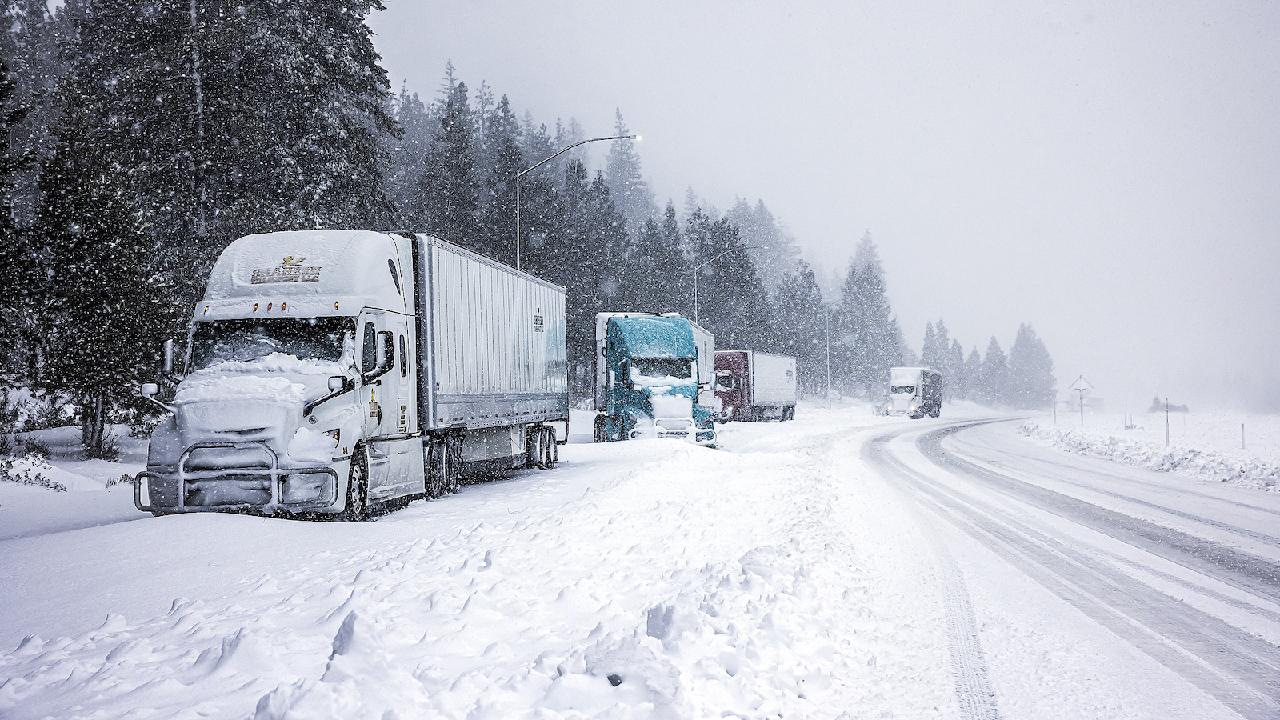
Heavy downpours fell over much of Northern California on Friday, causing small landslides, overflowing a river and flooding some streets, including in parts of San Francisco. Meanwhile tens of thousands of people were still without power in the Seattle area after several days in the dark. The storm arrived in the Pacific Northwest earlier this week, killing two people and knocking out power to hundreds of thousands, mostly in the Seattle area, before moving through Northern California, where several roads were closed due to flooding and strong winds toppled trees.
Forecasters warned about the risk of flash flooding and rockslides in areas north of San Francisco from this season's strongest atmospheric river – a long plume of moisture that forms over an ocean and flows through the sky over land. On the East Coast, another storm brought much-needed rain to New York and New Jersey, where rare wildfires have raged in recent weeks. The rain eased the fire danger for the rest of the year and was a boost for ski resorts preparing to open in the weeks ahead.

Parts of West Virginia were under a blizzard warning through Saturday morning, with up to 60 centimeters of snow and high winds making travel treacherous. In California's Humboldt County, the sheriff's office downgraded evacuation orders to warnings for people near the Eel River after forecasters said the waterway would see moderate but not major flooding. Officials urged residents to prepare for storm impacts throughout the week.
Flooding closed scenic Highway 1, also known as the Pacific Coast Highway, in neighboring Mendocino County north of Point Arena near the Garcia River, and there was no estimate for when it would reopen, according to the California Department of Transportation. A small mudslide threatened a home in the community of Fitch Mountain, near Healdsburg, nestled in hills along the Russian River in Sonoma County. Moderate rain was falling, and officials worried the slide could grow and hit several homes downhill.
In Washington state more than 138,000 people were still without electricity, mostly in Seattle's King County, as crews worked to clear streets of downed lines, branches and other debris. Utility officials said the outages, which began Tuesday, could last into Saturday. People flocked to a suburban senior center in Issaquah to get warm food and plug in their cellphones and other devices.
Gale warnings were issued off Washington, Oregon and California, and high wind warnings were in effect across parts of Northern California and Oregon. There were winter storm warnings for parts of the California Cascades and the Sierra Nevada. The National Weather Service in Reno, Nevada, reported a 200 kph gust of wind in the morning at the top of Palisades Tahoe ski resort, about 16 kilometers northwest of Lake Tahoe, where some runs were open.
Gusts up to 140 kph were recorded at Mount Rose, which closed due to the weather. The system roared ashore on the West Coast on Tuesday as a "bomb cyclone," which occurs when a cyclone intensifies rapidly. It unleashed fierce winds that toppled trees onto roads, vehicles and homes.
Officials warned of the risk of flash flooding, rockslides and debris flows, especially where hillsides were loosened by recent wildfires. In the Northeast, which has been hit by drought, more than five centimeters of rain was expected by Saturday morning north of New York City, with snow mixed in at higher elevations. Heavy snow fell in northeastern Pennsylvania, including the Pocono Mountains, prompting a raft of school closures.
Higher elevations reported up to 43 cm, with lesser accumulations in valley cities like Scranton and Wilkes-Barre. More than 100,000 customers in 10 counties lost power, and the state transportation department imposed speed restrictions on some highways. (Cover: Truckers hole up along the side of I-5 to let the storm pass before the highway is reopened in Weed, California, the U.
S., November 20, 2024. /CFP).














